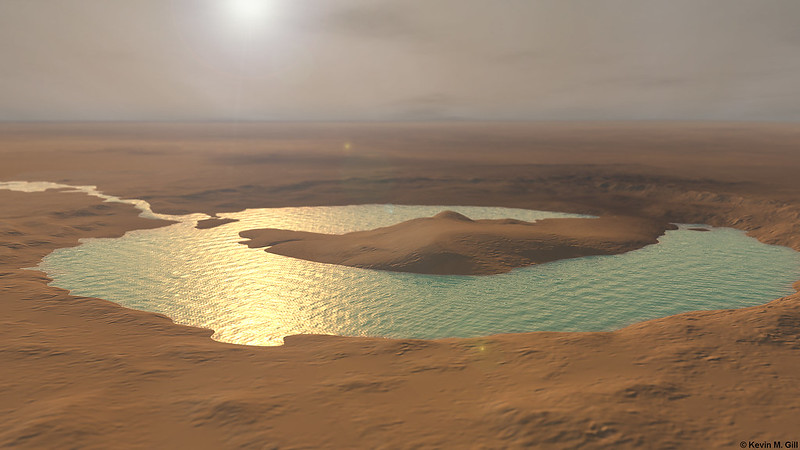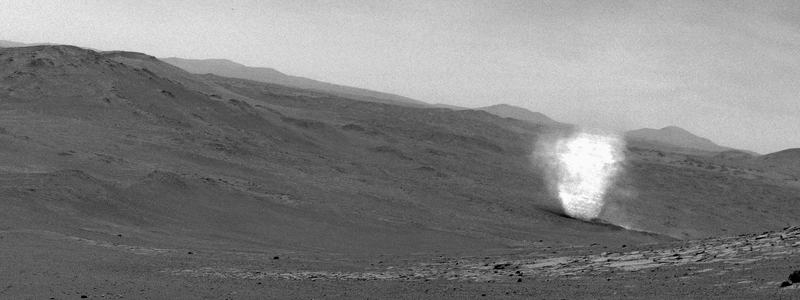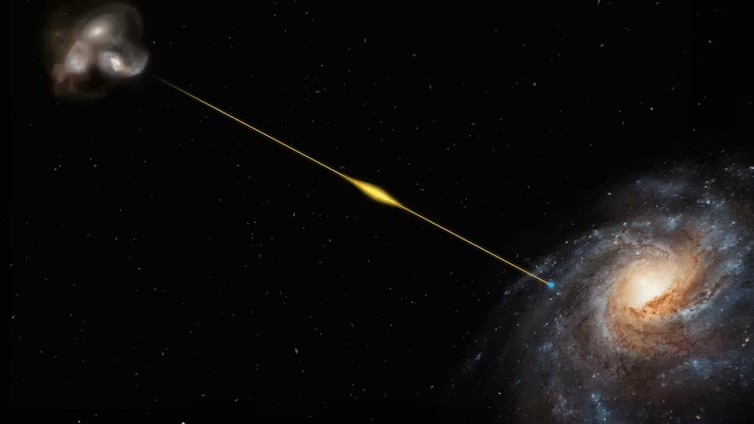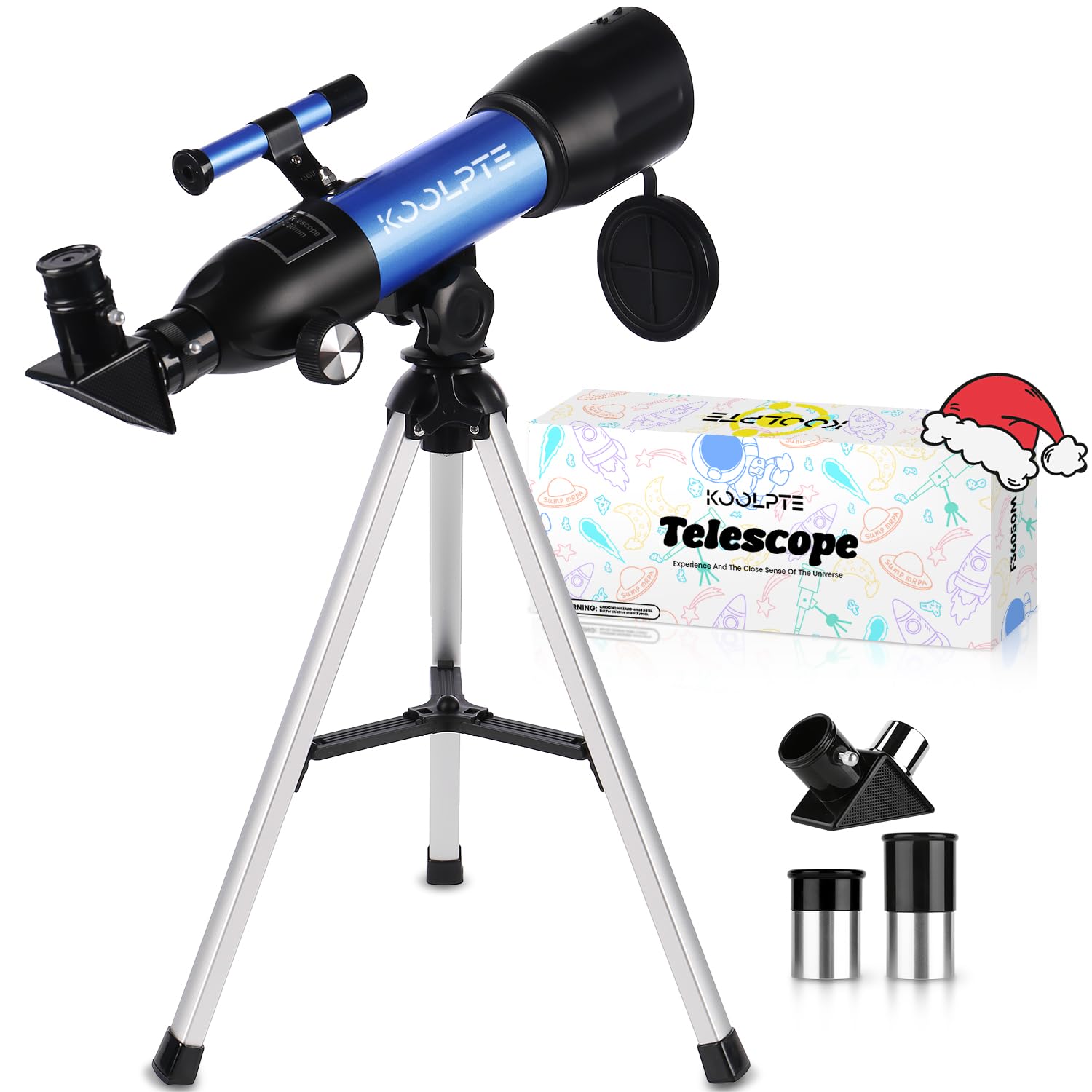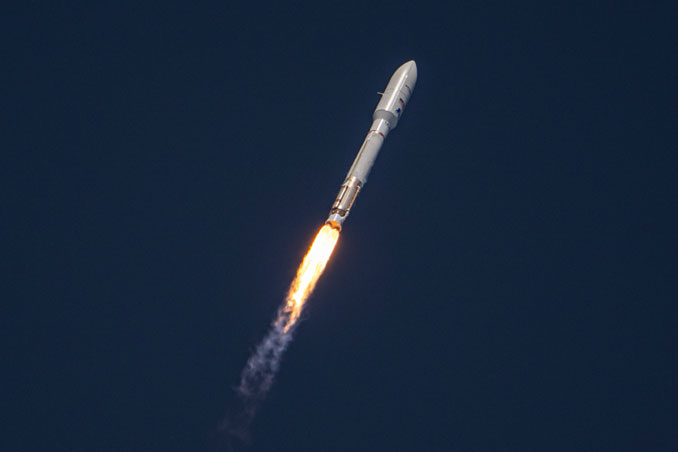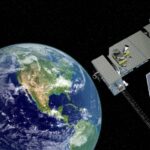Now Reading: Parker Solar Probe to touch the sun on December 24
-
01
Parker Solar Probe to touch the sun on December 24
Parker Solar Probe to touch the sun on December 24
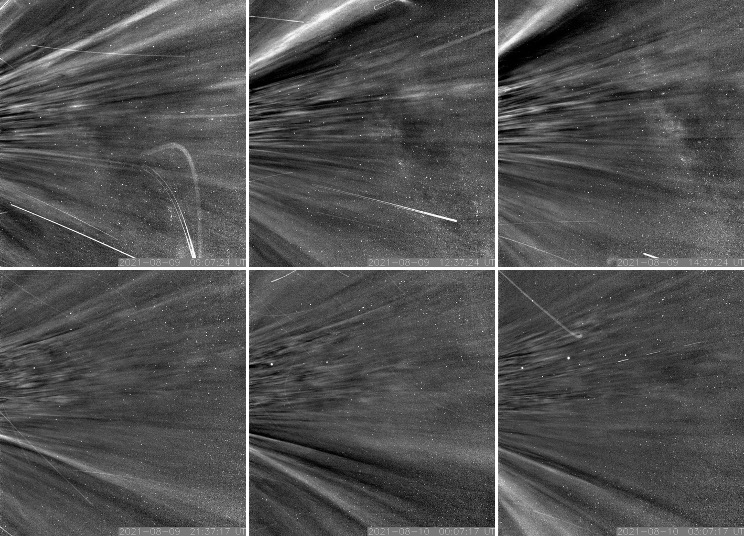
Parker Solar Probe will make humanity’s closest approach to the sun on Christmas Eve, December 24! For the latest, watch the livestream above at the RESCHEDULED time of 1:15 p.m. CST (19:15 UTC) on Monday, December 23. EarthSky founder Deborah Byrd will host. Heliophysicist C. Alex Young, co-author of this daily sun news update, will join. Join us in marveling at a spacecraft that can touch the sun!
Parker Solar Probe’s closest sun flyby on December 24
On November 6, 2024, the Parker Solar Probe completed its 7th and final gravity assist with Venus, in preparation for the world’s closest encounter of a spacecraft with our sun. And that’s saying something. Already, in 2021, Parker Solar Probe became the first spacecraft ever to touch the sun, that is to fly within the sun’s corona or outer atmosphere. But it’s due to come closer still. On December 24, 2024, Parker will break its own record when it comes within 3.86 million miles (6.2 million km) of the sun’s surface.
As the spacecraft once again becomes the closest humanmade object to the sun, it will be out of contact with mission control. In fact, we won’t hear how Parker’s trip was until three days later (!), on December 27, 2024. That’s when the probe will send a beacon back to Earth. But, even then, Parker Solar Probe’s mission won’t be over. It’ll complete two more close encounters with the sun at the same distance as the December 24 event. The seven-year mission should conclude sometime in 2025.
Needless to say, the results from Parker Solar Probe’s mission will be unprecedented. And sun scientists are excited about this spacecraft’s data-gathering ability so close to our local star. At this month’s American Geophysical Union meeting in Washington, D.C., sun scientists were particularly focused on space weather. That is, they were excited about increasing their understanding of how flares on the sun can lead to conditions in near-Earth space that affect our world’s magnetic field. The effects can include beautiful auroral displays. And they can include fried satellite and power grid components. These scientists believe the results from Parker Solar Probe will help keep our human society safer from the effects of solar flares. NASA said in a statement:
The primary goals are to examine the acceleration of solar wind through the movement of heat and energy in the sun’s corona in addition to study solar energetic particles.
Dr. C. Alex Young, co-author of EarthSky’s daily sun news update, talked about Parker Solar Probe and about what scientists were buzzing about at the AGU meeting, in this EarthSky livestream:
Hear EarthSky founder Deborah Byrd – and Dr. C. Alex Young of NASA Goddard Space Flight Center, co-author of EarthSky’s daily sun news update – discuss what scientists were saying at this year’s AGU meeting, in the video above.
When Parker Solar Probe 1st touched the sun in 2021
Parker Solar Probe became the first spacecraft to literally touch the sun on April 28, 2021. Scientists made the announcement on December 14, 2021, at the American Geophysical Union meeting in New Orleans. They said the Parker Solar Probe flew through the sun’s upper atmosphere, its wispy corona. The corona is that fiery-looking outer layer of the sun that appears around the moon’s silhouette during total solar eclipses.
Parker Solar Probe has been sampling the corona’s particles and magnetic fields. It’s been making discoveries more distant spacecraft can’t make. For example, the solar wind is a stream of charged particles released from the sun’s corona. Parker Solar Probe found zigzag structures in the solar wind that scientists are calling switchbacks.
Also on December 14, 2021, the peer-reviewed Physical Review Letters published the results of Parker Solar Probe’s first venture into the sun’s upper atmosphere.
Thomas Zurbuchen, the associate administrator for the Science Mission Directorate at NASA Headquarters in Washington, said:
Touching the sun is a monumental moment for solar science and a truly remarkable feat. Not only does this milestone provide us with deeper insights into our sun’s evolution and its impacts on our solar system, but everything we learn about our own star also teaches us more about stars in the rest of the universe.
In addition, Nour Raouafi of Johns Hopkins Applied Physics Laboratory said:
Flying so close to the sun, Parker Solar Probe now senses conditions in the magnetically dominated layer of the solar atmosphere – the corona – that we never could before. We see evidence of being in the corona in magnetic field data, solar wind data, and visually in images. We can actually see the spacecraft flying through coronal structures that can be observed during a total solar eclipse.

Watch a video about when Parker Solar Probe touched the sun
Reaching the Alfvén critical surface
NASA launched Parker toward the sun in 2018. As Parker circled closer and closer during several flybys, scientists looked for indications that it had reached the Alfvén critical surface. The Alfvén critical surface is the point that marks the end of the solar atmosphere and the beginning of the solar wind. While the sun doesn’t have a solid surface, it does have a boundary. The boundary is the point at which solar material bound to the sun by gravity and magnetic forces ends.
Solar material energetic enough to cross the Alfvén critical surface becomes the solar wind, dragging magnetic field lines with it. Once the material crosses this boundary, the wind is moving too fast to ever travel back to the sun, severing the connection.
Scientists estimated the Alfvén critical surface was somewhere between 10 to 20 solar radii from the surface of the sun. This is equal to 4.3 to 8.6 million miles (7 to 13.8 million km) from the sun. When Parker finally spiraled close enough to the sun to detect that it had crossed the Alfvén critical surface, it was 18.8 solar radii (around 8 million miles or 13 million km) above the solar surface. For the first time, on April 28, 2021, Parker entered the solar atmosphere.
Justin Kasper of BWX Technologies Inc. and the University of Michigan, said:
We were fully expecting that, sooner or later, we would encounter the corona for at least a short duration of time. But it is very exciting that we’ve already reached it.

The peculiarities of the sun’s border
Parker Solar Probe discovered that this boundary – the Alfvén critical surface – isn’t smooth and round. The edge has wrinkles. The spacecraft passed through spikes and valleys as it dove in and out of the boundary. Parker got as close as just under 15 solar radii (around 7 million miles or 11 million km) from the sun’s surface. In this region it passed through a pseudostreamer, a feature in the corona. Pseudostreamers are towering structures that rise above the sun’s surface that we can see during solar eclipses.
Being inside the pseudostreamer was like being inside the eye of a hurricane. The conditions were quieter and slower, easing the barrage of particles on the spacecraft. In this region, magnetic fields were the dominate force over particles, providing proof that Parker was inside the Alfvén critical surface.
Parker only spent a few hours in the sun’s corona. But the spacecraft will continue to spiral closer, aiming for a distance of 8.86 solar radii (3.83 million miles or 6.1 million km) from the surface. Its next flyby, in January 2022, should dip Parker into the corona again. Nicola Fox of NASA said:
I’m excited to see what Parker finds as it repeatedly passes through the corona in the years to come. The opportunity for new discoveries is boundless.

Solar maximum and switchbacks
The sun’s corona expands in size during periods of higher solar activity. The sun is currently in solar cycle 25, which should reach a peak in activity (solar maximum) around 2025. This expansion will allow Parker to spend more time inside the corona. Kasper said:
It is a really important region to get into because we think all sorts of physics potentially turn on. And now we’re getting into that region and hopefully going to start seeing some of these physics and behaviors.
One behavior of the sun that Parker is already investigating is that of strange kinks in the solar wind’s magnetic field lines. Scientists first spotted these switchbacks in the mid-1990s and thought they were limited to the sun’s polar regions. Parker encountered the zigzags in the solar wind in 2019, finding that they are common, not rare. And now that Parker is twice as close to the sun as it was in 2019, it can see where these kinky structures originate: the solar surface. Its findings confirm that the switchbacks come from the photosphere, or the visible surface of the sun.
Parker discovered that the switchbacks occur in patches and have a higher percentage of helium – a sign that they came from the photosphere – than other elements. Parker also found that the patches of switchbacks aligned with magnetic funnels that emerge from the photosphere between convection cell structures called supergranules.
Now, scientists think these magnetic funnels may also be the source of the fast solar wind. Stuart Bale of the University of California, Berkeley, said:
The structure of the regions with switchbacks matches up with a small magnetic funnel structure at the base of the corona. This is what we expect from some theories, and this pinpoints a source for the solar wind itself.
Parker Solar Probe: More mysteries
As astronomers learn more about the solar wind and switchbacks, they hope it will help them unlock a long-standing mystery in astronomy: why the corona is so much hotter than the surface of the sun. Bale said:
My instinct is, as we go deeper into the mission and lower and closer to the sun, we’re going to learn more about how magnetic funnels are connected to the switchbacks and hopefully resolve the question of what process makes them.
Scientists hope to learn more about the superheated corona and what pushes the solar wind to supersonic speeds. This will also help them understand and forecast space weather events that impact Earth’s environment and sometimes human technology.
Joseph Smith, Parker program executive at NASA Headquarters, said:
It’s really exciting to see our advanced technologies succeed in taking Parker Solar Probe closer to the sun than we’ve ever been, and to be able to return such amazing science. We look forward to seeing what else the mission discovers as it ventures even closer in the coming years.
Bottom line: The Parker Solar Probe will make its closest pass by the sun on December 24, 2024. It will be even closer than when it 1st “touched the sun” in 2021.
Source: Parker Solar Probe Enters the Magnetically Dominated Solar Corona
The post Parker Solar Probe to touch the sun on December 24 first appeared on EarthSky.
Stay Informed With the Latest & Most Important News
Previous Post
Next Post
-
 012024 in Review: Highlights from NASA in Silicon Valley
012024 in Review: Highlights from NASA in Silicon Valley -
 02Panasonic Leica Summilux DG 15mm f/1.7 ASPH review
02Panasonic Leica Summilux DG 15mm f/1.7 ASPH review -
 03How New NASA, India Earth Satellite NISAR Will See Earth
03How New NASA, India Earth Satellite NISAR Will See Earth -
 04From Polymerization-Enabled Folding and Assembly to Chemical Evolution: Key Processes for Emergence of Functional Polymers in the Origin of Life
04From Polymerization-Enabled Folding and Assembly to Chemical Evolution: Key Processes for Emergence of Functional Polymers in the Origin of Life -
 05And Thus Begins A New Year For Life On Earth
05And Thus Begins A New Year For Life On Earth -
 06Astronomy Activation Ambassadors: A New Era
06Astronomy Activation Ambassadors: A New Era -
07SpaceX launch surge helps set new global launch record in 2024












